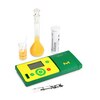475876 Mitochondrial Permeability Transition Pore Reagents Set
Produits recommandés
Aperçu
| Replacement Information |
|---|
| Description | |
|---|---|
| Overview | This product has been discontinued. |
| Catalogue Number | 475876 |
| Brand Family | Calbiochem® |
| References |
|---|
| Product Information | |
|---|---|
| Hygroscopic | Hygroscopic |
| Applications |
|---|
| Biological Information | |
|---|---|
| Primary Target | cytosolic side specific mitochondrial ADP/ATP |
| Physicochemical Information |
|---|
| Dimensions |
|---|
| Materials Information |
|---|
| Toxicological Information |
|---|
| Safety Information according to GHS |
|---|
| Product Usage Statements |
|---|
| Packaging Information | |
|---|---|
| Packaged under inert gas | Packaged under inert gas |
| Transport Information |
|---|
| Supplemental Information |
|---|
| Specifications |
|---|
| Global Trade Item Number | |
|---|---|
| Référence | GTIN |
| 475876 | 0 |
Documentation
Mitochondrial Permeability Transition Pore Reagents Set Certificats d'analyse
| Titre | Numéro de lot |
|---|---|
| 475876 |













